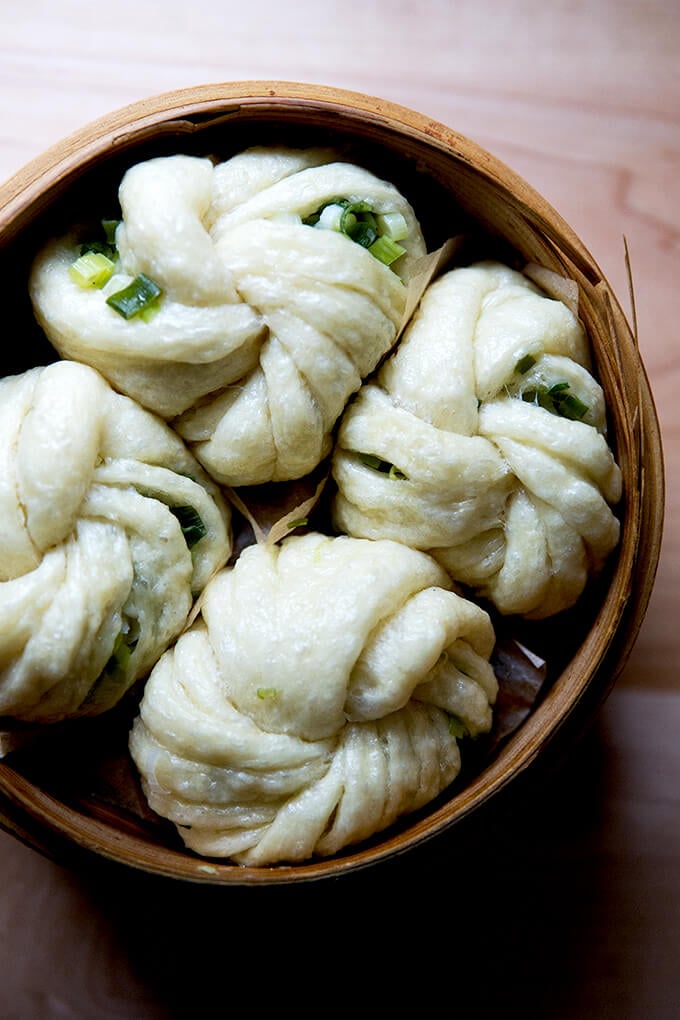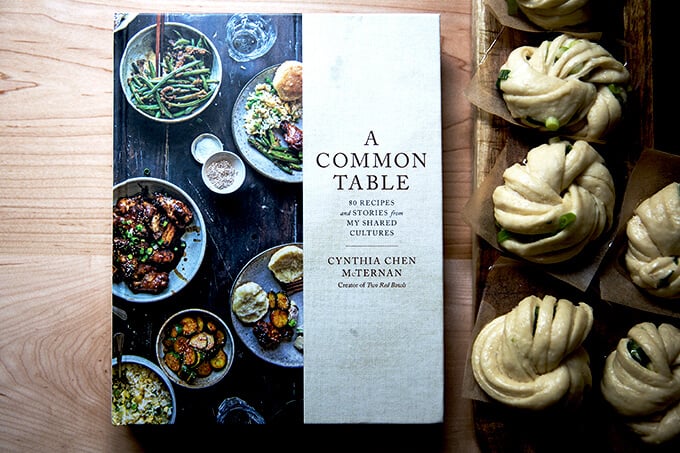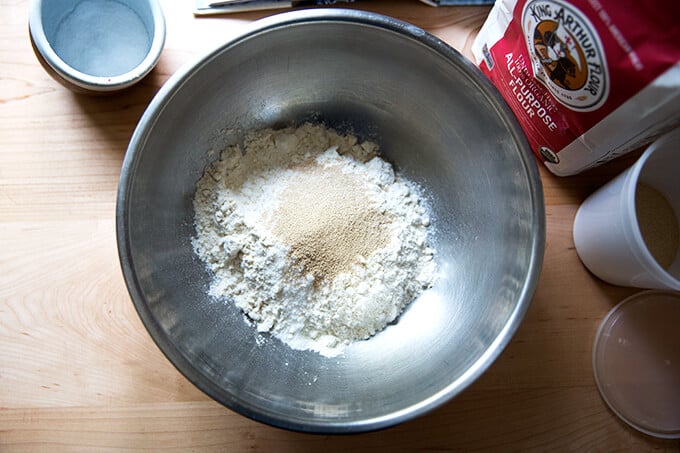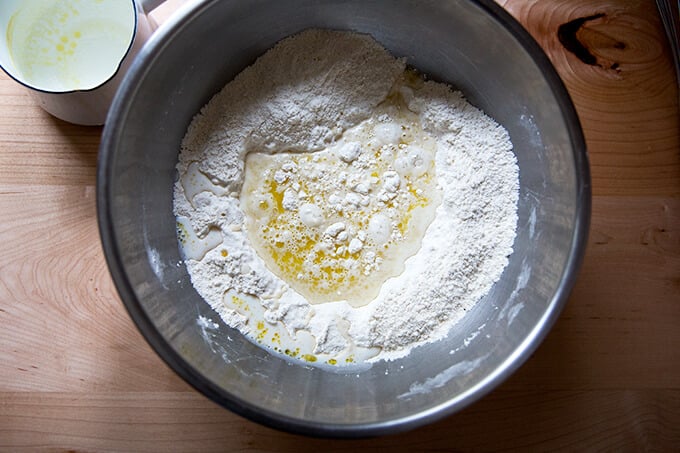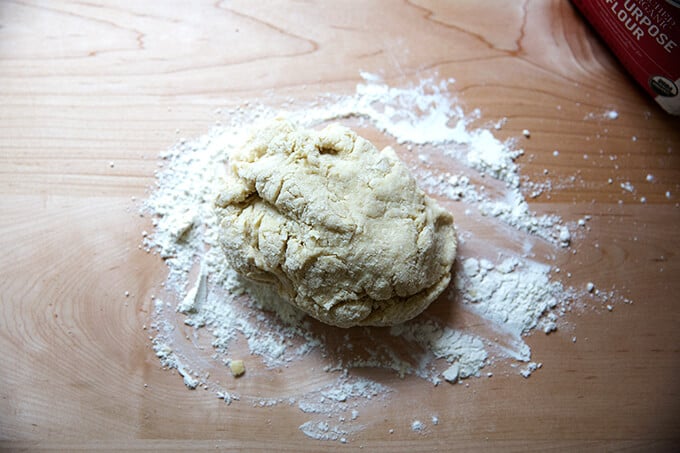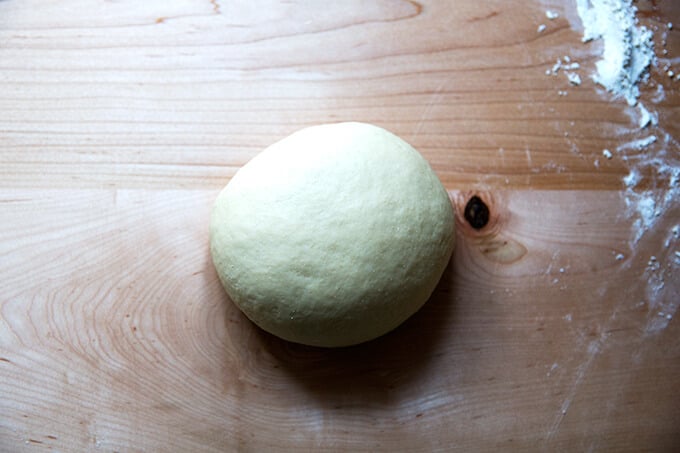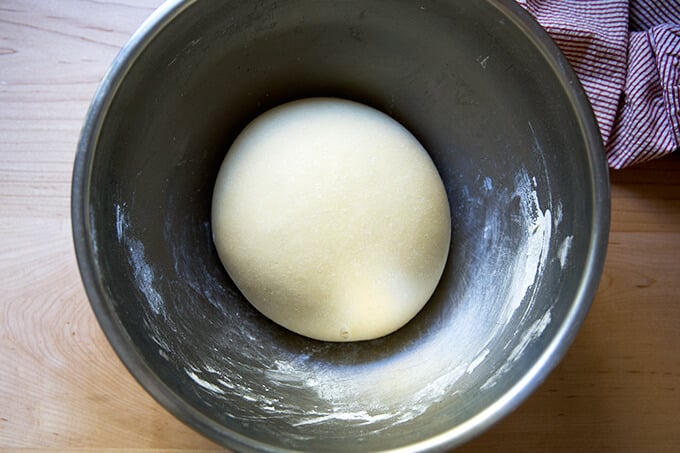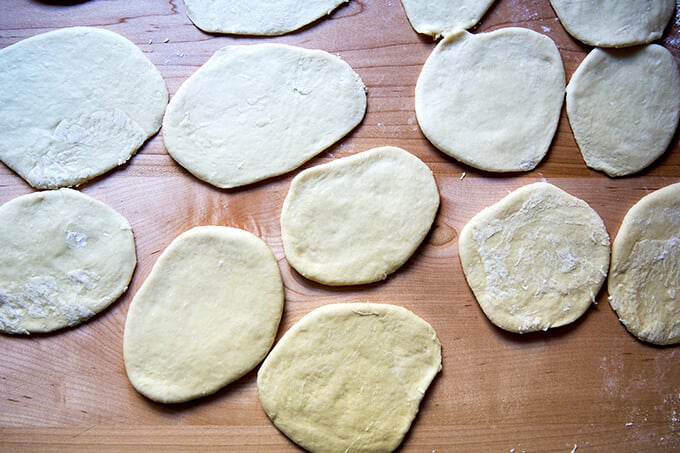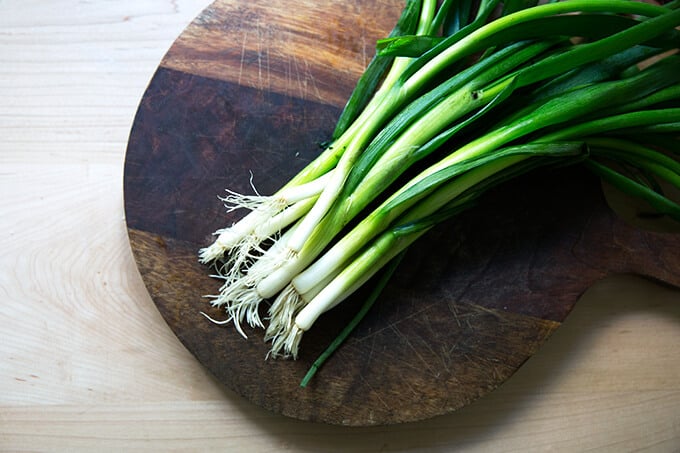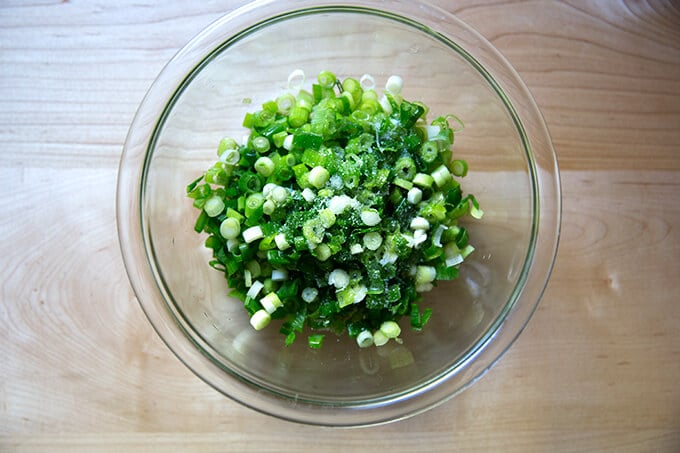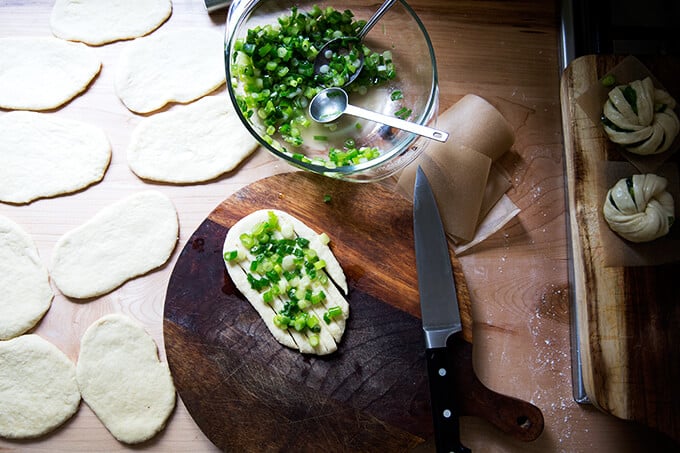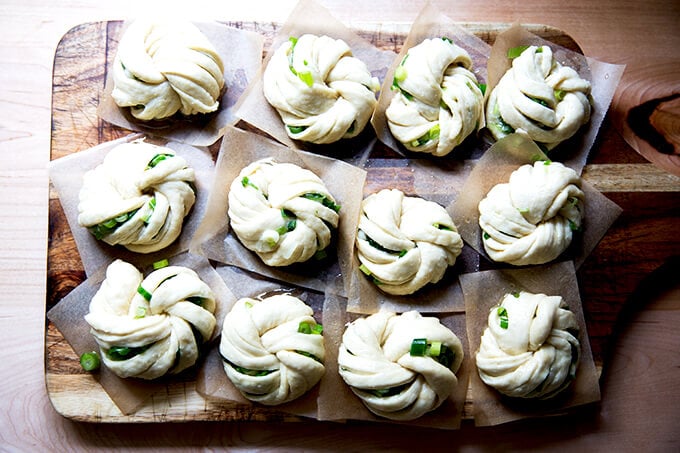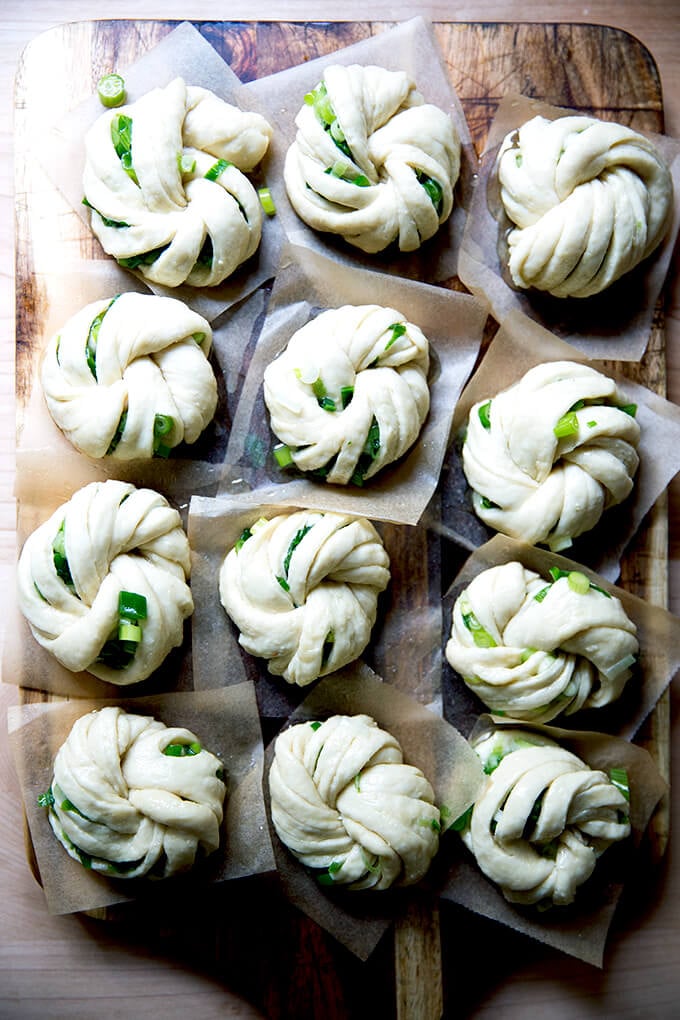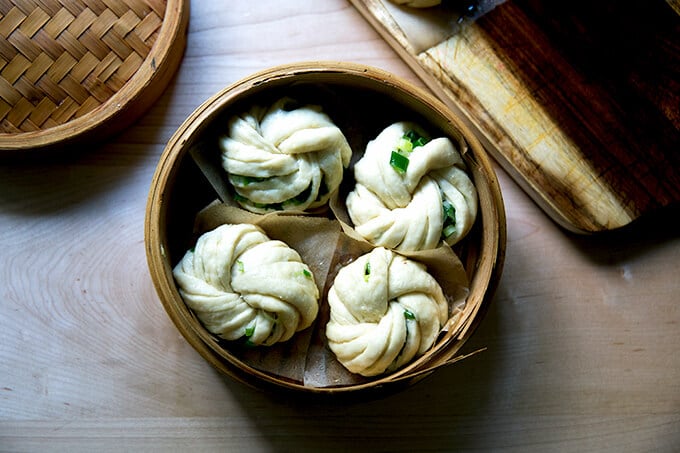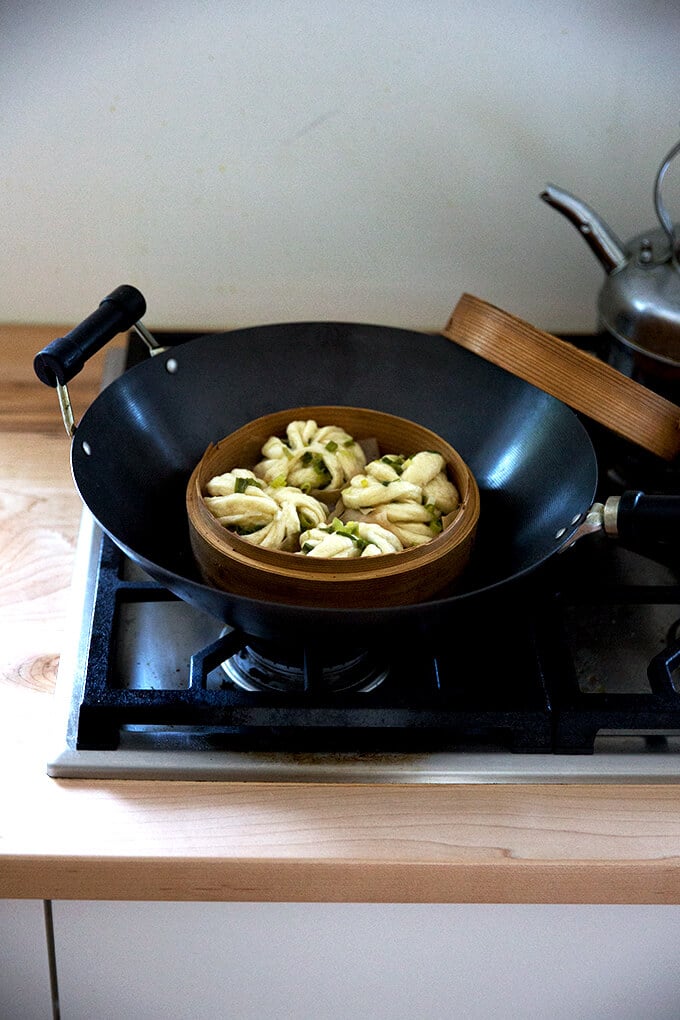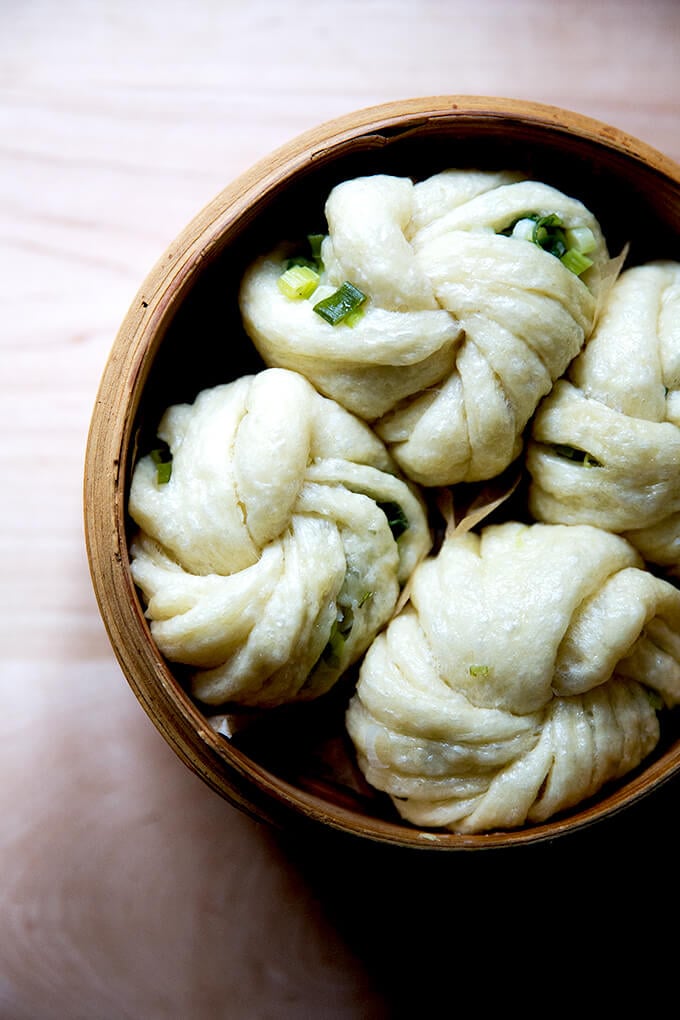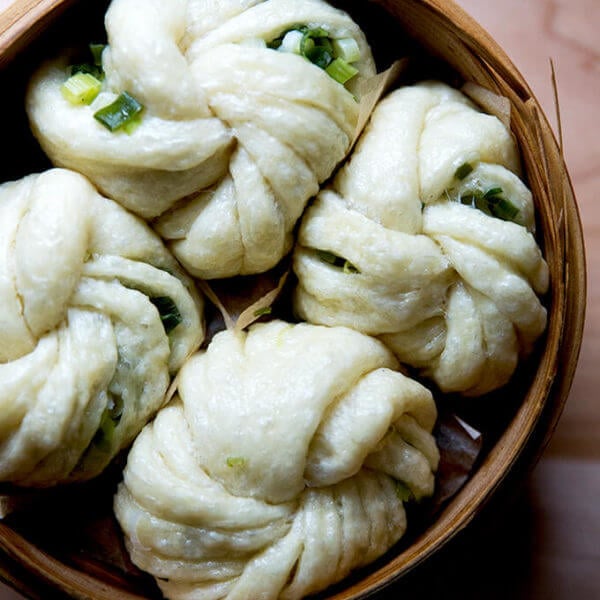Shortly after opening Cynthia McTernan’s A Common Table, I found myself reading about Chinese steamed buns, mainstays of the country’s breakfasts and snacks, fluffy white vehicles to be eaten on their own or stuffed with countless fillings from barbecued pork to egg custard. The recipe looked simple and surprisingly familiar, not unlike making a brioche roll: knead together a slightly sweet yeasted dough, let it rise, punch it down, divide, shape, and … steam! Unlike a brioche bun, steamed buns are, well, steamed. Lured by a photo of spiraled knots, I made the scallion buns, which emerged from the steamer puffed and bouncy, feathery light in texture with a nice chew and an onion-y flavor permeating every bite. My family, or, I should say, Ben, me and two of the four children (50%, hey, I’ll take it) gobbled them up. I served them with okonomiyaki, a favorite, and a soy dipping sauce, which we used for both the buns and the cabbage pancakes. I haven’t had a steamed bun quite so good since many years ago now, when I found myself in San Francisco trying to get into the Slanted Door for lunch. Deterred by the hour-long wait, I headed instead to Out the Door, the Slanted Door’s takeaway outfit, and before long found myself, pork bun in hand, strolling the streets just as happy as ever. I still dream about that bun: the warm, springy bread; the sweet barbecued pork nestled inside. It was perfect. Never would I imagine being able to make something even remotely similar at home. With this new knowledge of steamed-bun making in hand, I feel confident that pork bun of my dreams is closer to becoming a reality. As always, I’ll keep you posted. Friends, I’ve been a long-time follower of Cynthia’s blog, Two Red Bowls, and her book, A Common Table, is a beautiful extension of that space, a mix of stories and recipes inspired by both her and her husband’s cultural and geographical roots. Read more about A Common Table on Cynthia’s lovely blog. Here’s a steamed-bun-making play-by-play: Whisk together flour, sugar, salt, and yeast. Add warm milk and oil. Form into a dough ball. Knead until smooth and elastic. Let rise until doubled, at least 2 hours. Divide into 12 pieces, then roll each into 4×6-inch ovals. Gather some scallions. Slice them finely, then mix with oil and salt. Make slits in the ovals and top with the scallion mixture. Then … …twist into knots. After 30 to 40 minutes of resting, the buns are ready to be steamed. After 15 minutes in the steamer … 5 from 8 reviews As always, a digital scale is recommended when measuring flour for bread. This is really nice with Okonomiyaki (Cabbage Pancakes), and it would wonderful aside Red-Cooked Pork Belly and Simple Cucumber Salad as well.
